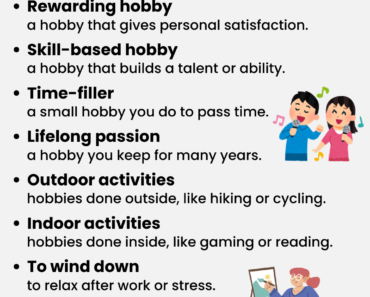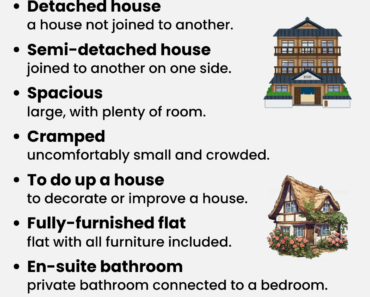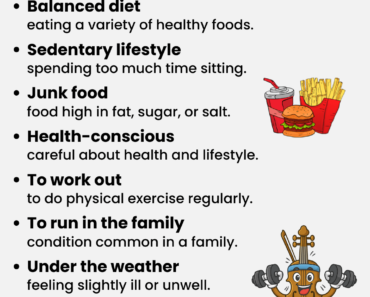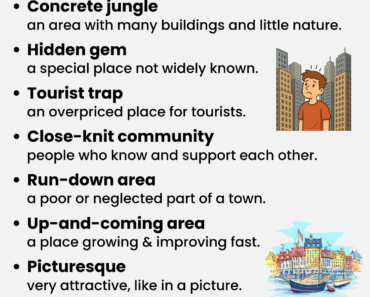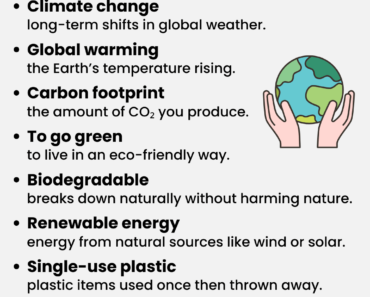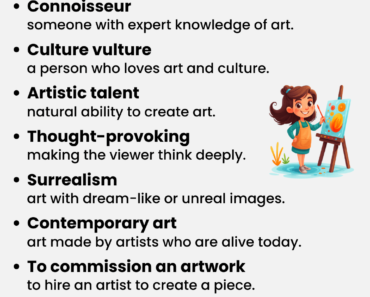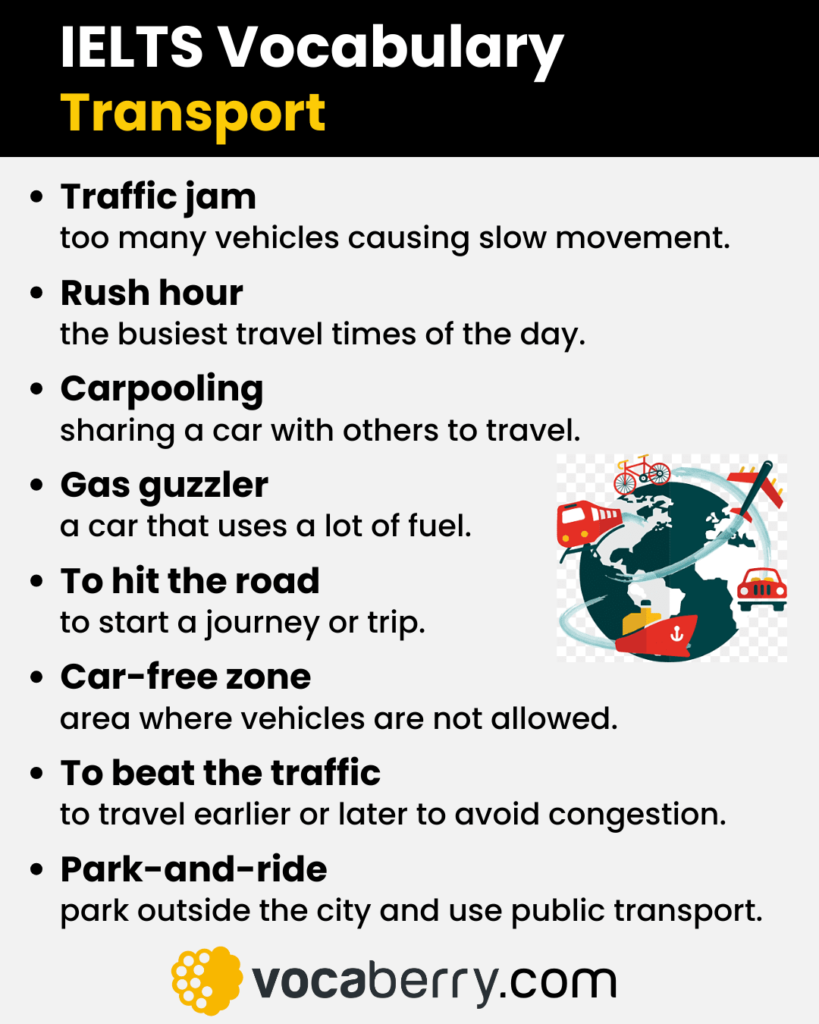
Transport is another popular topic in the IELTS Speaking test. Examiners may ask you about how you usually travel, your opinions on public transport, or the advantages of different modes of transport. In this guide, you’ll find useful IELTS vocabulary for transport with clear definitions, followed by IELTS Speaking Part 1, Part 2, and Part 3 questions with sample answers.
IELTS Vocabulary for Transport
Here is some useful IELTS vocabulary for talking about transport with clear definitions. These words and phrases will help you give better answers in the IELTS Speaking test.
- Public transport – buses, trains, metro, etc.
- Private transport – cars or vehicles owned by individuals.
- Traffic congestion – too many vehicles causing slow movement.
- Rush hour – the busiest travel times.
- Commute – the journey between home and work/school.
- Commute time – how long it takes to travel to work.
- Reliable service – transport that arrives on time.
- Unreliable service – transport that is often late.
- Fare – the cost of a journey.
- Toll – money paid to use a road or bridge.
- Season ticket – prepaid ticket for regular journeys.
- Airfare – the cost of a plane ticket.
- On board – inside a bus, train, or plane.
- Carpooling – sharing a car with others.
- Ride-hailing app – apps like Uber or Lyft.
- Overcrowded – too full of passengers.
- Traffic jam – when vehicles can’t move due to congestion.
- Bumper to bumper – traffic moving very slowly, cars close together.
- Backseat driver – a passenger who gives unwanted driving advice.
- Gas guzzler – a car that uses a lot of fuel.
- Exhaust fumes – gases released from vehicles.
- Carsick – feeling ill while travelling in a car.
- Bus lane – road section only for buses.
- Cycle lane – road space for bicycles.
- HOV lane / carpool lane – lane reserved for vehicles with multiple passengers.
- Congestion charge – a fee for driving into busy city centres.
- Pedestrian zone – area where cars are not allowed.
- Pedestrian-friendly – safe and easy for people to walk.
- Road safety – measures to reduce accidents.
- Parking space – place to leave a car.
- Transport hub – a central place with many connections.
- Infrastructure – transport systems and facilities in a city.
- Infrastructure investment – money spent on transport systems.
- Delay / cancellation – when transport doesn’t run on time.
- Journey / trip / voyage – different types of travel.
- Domestic flight – flight within one country.
- Long-haul flight – international flight over long distances.
- High-speed rail – very fast trains.
- Underground / metro – train system below a city.
- Air pollution – dirty air caused by traffic and transport.
- Noise pollution – harmful or annoying sounds from traffic.
- Eco-friendly transport – transport that is not harmful to the environment.
- Sustainable transport – environmentally friendly travel methods.
- Carbon footprint – amount of carbon emissions caused by travel.
- Congested roads – streets full of slow-moving traffic.
- Traffic flow – how smoothly vehicles move on the road.
- Electrification – replacing fuel vehicles with electric ones.
- Fuel-efficient vehicle – a car or bus that uses little fuel.
- Electric vehicle – car powered by electricity.
- Hybrid vehicle – car powered by both fuel and electricity.
- Zero-emission vehicle – vehicle that doesn’t release harmful gases.
- Park-and-ride – parking outside the city and using public transport in.
- Cost-effective – providing good value for money.
- Car-free zone – area where vehicles are not allowed.
- Off-peak travel – journeys made outside the busiest times.
- Urban sprawl – city areas spreading out, increasing travel distance.
- Gridlock – total standstill in traffic.
- Seatbelt law – legal requirement to wear seatbelts in vehicles.
- Air traffic control – system ensuring planes fly safely.
- Jet lag – tiredness from long flights across time zones.
- Luggage allowance – maximum baggage permitted on flights.
- Check-in counter – desk to register before a flight.
- Boarding pass – ticket to enter an airplane.
- Departure lounge – waiting area before boarding a flight.
- Runway – strip of land for aircraft takeoff and landing.
- Flight delay – when a plane departs later than scheduled.
- Missed connection – failing to catch a connecting flight.
- Driverless car / self-driving car – a car controlled by AI, not a driver.
- Space travel – travelling beyond Earth.
- A speeding fine – money you must pay for driving too fast.
- Car dependency – reliance on cars rather than public transport.
- Transport network – system of connected transport routes.
- Traffic regulations – official rules for road use.
- Commuter belt – area surrounding a city where many workers live.
- To commute – to travel regularly between home and work/school.
- To miss the bus – to arrive too late for the bus.
- To catch the bus – to get on a bus in time.
- To go on foot – to walk instead of using transport.
- To hit the road – to start a journey.
- To beat the traffic – to travel before or after rush hour to avoid congestion.
- To hitch a lift / ride – to get free transport by asking someone.
IELTS Speaking: Transport Questions & Answers
In this section, you’ll find IELTS Speaking Part 1, Part 2, and Part 3 questions on transport with sample answers. These examples show how the transport vocabulary can be used in your responses during the test.
IELTS Speaking Part 1 – Transport
How do you usually travel in your daily life?
I mostly use public transport, especially the underground, because it’s quicker during rush hour. Buses can get stuck in a traffic jam, but the tube keeps moving and the fare is reasonable with a season ticket.
Do you prefer travelling by car or by bus?
If I’m alone, I choose the bus because it’s more cost-effective and better for my carbon footprint. When I’m with friends, we sometimes use a ride-hailing app or do a bit of carpooling to avoid congested roads and parking hassles.
How long is your daily journey to work or school?
My commute time is about 30 minutes. The bus has a bus lane for part of the route, which improves traffic flow, but near the centre it can still be bumper to bumper.
What transport problems does your area have?
The main issue is traffic congestion at peak times, which leads to air pollution from exhaust fumes. Trains are convenient, but occasional delays and cancellations make the service unreliable.
How could transport be improved where you live?
I think the city should invest more in sustainable transport. Adding more cycle lanes, pedestrian zones, and park-and-ride facilities would encourage people to leave their cars at home. Incentives for electric vehicles and better infrastructure investment would also make the system more efficient and eco-friendly.
IELTS Speaking Part 2 – Transport Cue Card
Describe a form of transport you use regularly or have used.
You should say:
- what it is
- how often you use it
- what you like or dislike about it
- and explain why this form of transport is important to you.
Sample Answer:
I’d like to talk about the underground, which is the main form of public transport I use in my city. I usually take it almost every day to go to work because my office is in the city centre, and driving a car there would mean getting stuck in endless traffic congestion during rush hour.
The good thing about the underground is that it’s relatively reliable. Even when the streets are completely bumper to bumper, the trains keep moving, so my commute time is quite predictable. I’d say it usually takes me about 25 minutes, which is not too bad compared to people who travel by bus and often face delays or cancellations. Another advantage is that it’s cost-effective. With a season ticket, I don’t have to think about buying individual tickets, and it definitely saves me money in the long run.
Of course, there are some disadvantages. During peak hours it can be absolutely overcrowded, and sometimes you can’t even find a place to sit. Also, the air isn’t great underground, and I imagine the exhaust fumes from traffic above don’t help the situation. But compared to sitting in a car and wasting fuel like a gas guzzler, I’d still prefer the underground any day.
This form of transport is really important to me because it helps me reduce my carbon footprint and contributes to sustainable transport in the city. I think if more people switched to the underground or carpooling, the city would have less air pollution and better traffic flow. Personally, I also feel it gives me extra time to read a book or just relax instead of stressing about driving.
So overall, despite some minor inconveniences, I’d say the underground is an essential part of my daily life and probably the most practical way to get around a big city like mine.
IELTS Speaking Part 3 – Transport Discussion
IELTS Speaking Part 3 questions about transport often ask you to compare different ways of travelling, discuss the impact of transport on the environment and society, and give opinions on future developments such as electric cars or high-speed trains.
Do you think it is better for governments to invest in public transport or roads?
I believe governments should prioritise public transport over building more roads. Expanding underground networks, bus lanes, and high-speed rail can reduce traffic congestion and make commuting more efficient. By contrast, adding new roads often encourages more car dependency and leads to urban sprawl. Public transport is also more eco-friendly, especially when cities shift towards electrification or zero-emission vehicles. Of course, roads are still necessary for freight and rural areas, but in big cities, investing in sustainable transport is a smarter long-term solution.
How has modern technology changed the way people travel?
Technology has completely transformed the way we move around. Ride-hailing apps like Uber or Lyft make it easier to get a car without owning one, while real-time updates help passengers avoid delays or cancellations. Cars are becoming smarter too, with driverless cars and hybrid vehicles already being tested. Even traditional public transport is improving, thanks to electronic ticketing systems and apps that track traffic flow. I think the biggest shift will come from autonomous vehicles and zero-emission transport, which could make travel safer and more environmentally friendly.
Why do some people still prefer driving their own cars?
Many people prefer private cars because of the convenience and flexibility they offer. Unlike public transport, you don’t need to wait for schedules or deal with overcrowded buses. Cars also provide more comfort, especially for families or people travelling long distances. However, this preference comes with problems such as traffic jams, exhaust fumes, and high costs of maintaining gas guzzlers. In the future, I think governments may use congestion charges and expand car-free zones to encourage people to rely less on their cars, especially in busy city centres.
What are the advantages and disadvantages of air travel?
Air travel has made the world more connected by allowing people to travel long distances quickly. It’s vital for international business, tourism, and cultural exchange. However, it also has serious drawbacks. Planes release huge amounts of carbon emissions, which contribute to climate change, and airports cause significant noise pollution. Passengers also face issues like jet lag, flight delays, and high airfares. While it’s difficult to replace air travel for long-haul journeys, investment in high-speed rail could reduce the need for domestic flights, making travel both faster and more sustainable.
What do you think transport will look like in the next 50 years?
I imagine transport will become much more sustainable and technology-driven. Cars will likely be fully electric or even driverless, and buses may run entirely on zero-emission systems. Cities might create more pedestrian-friendly areas with cycle lanes and car-free zones to improve traffic flow. For long distances, we might see widespread high-speed rail replacing short flights, while innovations like space travel could even become a form of tourism. Of course, the challenge will be ensuring that these developments are cost-effective so they are accessible to ordinary people, not just the wealthy.
More IELTS Vocabulary Topics
If you found this lesson useful, explore other IELTS Speaking topics to expand your vocabulary and practice with sample answers:
- IELTS Vocabulary: Accommodation
- IELTS Vocabulary: Advertisement
- IELTS Vocabulary: Animals
- IELTS Vocabulary: Art
- IELTS Vocabulary: Artificial Intelligence
- IELTS Vocabulary: Books
- IELTS Vocabulary: Childhood
- IELTS Vocabulary: Crime and Punishment
- IELTS Vocabulary: Culture and Traditions
- IELTS Vocabulary: Daily Routine
- IELTS Vocabulary: Education
- IELTS Vocabulary: Environment
- IELTS Vocabulary: Family
- IELTS Vocabulary: Fashion and Clothes
- IELTS Vocabulary: Films
- IELTS Vocabulary: Food & Diet
- IELTS Vocabulary: Friends
- IELTS Vocabulary: Gifts
- IELTS Vocabulary: Health
- IELTS Vocabulary: Hobbies
- IELTS Vocabulary: Hometown
- IELTS Vocabulary: Money
- IELTS Vocabulary: Museums
- IELTS Vocabulary: Music
- IELTS Vocabulary: Plants
- IELTS Vocabulary: Shopping
- IELTS Vocabulary: Social Media
- IELTS Vocabulary: Sports
- IELTS Vocabulary: Technology
- IELTS Vocabulary: Travel
- IELTS Vocabulary: Weather
- IELTS Vocabulary: Work & Jobs

